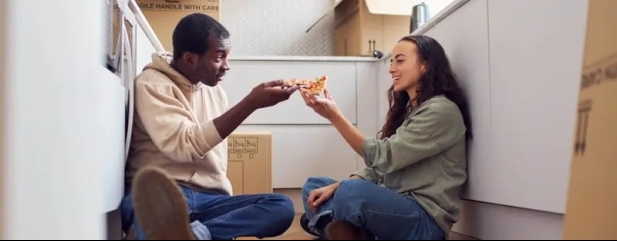Archived article
Please note that tax, investment, pension and ISA rules can change and the information and any views contained in this article may now be inaccurate.
Stamp duty changes in Budget to cost some buyers £11,250 more

Stamp duty changes announced in the Budget mean that from April 2025 buyers will face higher costs when buying a home – with first-time buyers hit the hardest.
The ending of a temporary stamp duty cut means that the tax will rise next year. This measure, originally introduced by former prime minister Liz Truss to boost the housing market, will end on 31 March 2025. The most significant impact will be felt by first-time buyers who buy property at the higher end of the market, with up to £11,250 in additional tax costs. Here’s what the upcoming changes mean for buyers and the housing market.
WHAT CHANGES ARE COMING TO STAMP DUTY FOR FIRST-TIME BUYERS?
Currently, first-time buyers in the UK benefit from reduced stamp duty rates on properties valued at £625,000 or less. For these buyers, there’s no stamp duty on the first £425,000 of the property’s value, and a 5% rate applies on the remaining value up to the £625,000 limit. However, with the upcoming changes in April 2025, the property value eligible for this reduction will drop to £500,000. On top of this, only the first £300,000 of a qualifying property will be exempt from stamp duty, with 5% payable on the remaining balance up to the new £500,000 threshold.
In the worst case, this change will result in a £11,250 increase in stamp duty for first-time buyers buying homes priced at £625,000. The table highlights the higher tax that first-time buyers will face when the new rules take effect.
HOW WILL HOME MOVERS BE AFFECTED BY THE CHANGES?
Home movers will also see changes in stamp duty rates, although the increase in tax will generally be lower than that for first-time buyers. Currently, those buying their next home pay no stamp duty on the first £250,000 of a property’s value, with a 5% rate on any amount up to £925,000. From April 2025, however, the threshold for stamp duty-free purchases will be lowered to £125,000, with a 2% rate re-introduced on properties valued between £125,001 and £250,000.
For home movers, the reintroduction of this 2% band means that they could face an additional £2,500 in stamp duty tax.
WILL THERE BE A RUSH TO BUY BEFORE THE DEADLINE?
The impending changes are expected to create a surge in property transactions before the deadline. With the stamp duty savings set to end on 31 March 2025, many buyers may attempt to secure property purchases before they face higher taxes. A similar trend was seen when pandemic-related stamp duty cuts expired, which led to a surge in sales. However, this urgency to buy could distort the market, potentially driving up property prices thanks to increased competition among buyers.
WHAT OTHER CHANGES HAPPENED TO STAMP DUTY IN THE BUDGET?
Those buying a second home were also hit with higher tax costs in the Budget. These buyers already face higher rates of stamp duty than people buying their main residence, but those rates will increase further. Before the Budget anyone buying an additional property paid an additional stamp duty rate that’s three percentage points higher, but Labour has now extended this to five percentage points. The change came into effect immediately, for any sales completing from 31st October onwards.
HOW A LIFETIME ISA CAN HELP FIRST-TIME BUYERS
If you’re aged 18 to 40 you could use a Lifetime ISA to help boost your house deposit savings – and help to offset some of those higher stamp duty costs - as you get a 25% bonus on your savings from the government. You can deposit up to £4,000 per tax year into a Lifetime ISA and the government will add up to £1,000 a year, effectively giving you free money that can significantly speed up your deposit savings efforts.
For example, someone who had opened a Lifetime ISA when the accounts were introduced in 2017 and paid in the full £4,000 a year would now have a pot worth just over £50,000, assuming 5% investment growth a year after charges.
Across those eight years they would have contributed £32,000 and benefited from £8,000 in free money from the government. They would have also seen just over £10,000 of investment growth in that time.
If instead you’d saved that same £4,000 a year into a normal stocks and shares ISA over the same timeframe, you’d have contributed the same £32,000 over the period. But you wouldn’t have benefitted from any government bonus and even if your investment returns stayed at the same 5% a year, the returns would be just over £8,000 – as you’re only getting returns on your contributions, not on the government bonus too. At the end of the period, you’d have £10,000 less in your savings pot.
However, it’s important to be aware that there are restrictions on how the funds can be used; you can only withdraw the money penalty-free when buying a first home priced at £450,000 or less, or after age 60. Withdrawing for any other reason triggers a 25% penalty on the amount withdrawn, which effectively reverses the government bonus and potentially reduces your original savings. Read more about how the accounts work here.
Important information:
These articles are provided by Shares magazine which is published by AJ Bell Media, a part of AJ Bell. Shares is not written by AJ Bell.
Shares is provided for your general information and use and is not a personal recommendation to invest. It is not intended to be relied upon by you in making or not making any investment decisions. The investments referred to in these articles will not be suitable for all investors. If in doubt please seek appropriate independent financial advice.
Investors acting on the information in these articles do so at their own risk and AJ Bell Media and its staff do not accept liability for losses suffered by investors as a result of their investment decisions.
 magazine
magazine








